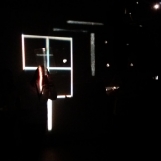Scenography 2019
Full Name: Katherine Graham and David Shearing
Annual Conference Theme (if applicable): Scenography and the Staging of Place
What were the main points that emerged from your WG this year?
We had a very successful meeting at Exeter with rich responses to our call for papers, which addressed questions of place in scenographic practice. This year we were able to respond to wider debates led by the Society of British Stage Designers (www.stagingplaces.co.uk) and the UK national exhibit for the 2019 Prague Quadrennial of Performance Space and Design. Contributions from our presenters addressed ideas of place in a number of ways, including relationships between site and body, relationships between bodies within space, and notions of material, constructed, and imagined space. In addition, many of the papers spoke to the idea of scenography as a particular mode of attending to space, and as a means of analysing both performance dramaturgy, and the political orchestration of space and place. The expanded territory of scenography covered included, festivals, cities, marathons, theme parks and architecture, stressing the rich intersectional qualities of scenographic thinking. The range of papers and the depth of the underlying research continue to mark the maturation of scenography as an academic discipline.
What was discussed at your business meeting?
We discussed various ways that the working group might respond to the pertinent issues of representation and decolonisation raised elsewhere in the conference. We talked through how our themes might be more inclusive and about ways we might develop shared readings and resources. We also discussed whether we might find further ways to document the work of our meetings, and whether the working group might seek to maintain a growing archive of questions and ideas. We spoke about the interdisciplinary nature of scenographic enquiry, and how we might draw on this interdisciplinarity in forging connections with scholars from other areas of research, in particular applied and socially engaged practices. Further to this, we discussed ways we might experiment with form in future meetings, thinking about possible ways to share work outside of the conference paper format and also how the physical space might be more conducive to debate and discussion. Within this conversation we highlighted the need to keep space for rigour in research alongside the potential to explore new forms of dissemination.
We also reflected on some of the themes and questions that had arisen in, or been sparked by, the contributions throughout the conference. Questions of scenography as agitator and of responses to the climate crisis figured heavily here, as did the broader question of scenography as a methodology for forms of research.
Types of contributions:
A range of forms of paper presentations; including traditional academic papers, a performance-lecture presentation, and presentations responding to the speakers’ practice based work.
Number of formal contributors (those listed in book of abstracts) 15
Approx. overall number of delegates who attended your WG Sessions 40
Composition of WG (PG, ECR, etc.)
Approximately 25% PG, 25% ECR
Did you have any non-UK participants? Yes
If your WG hosted an Open Panel, do you have any feedback?
Any additional points or feedback not covered above?

